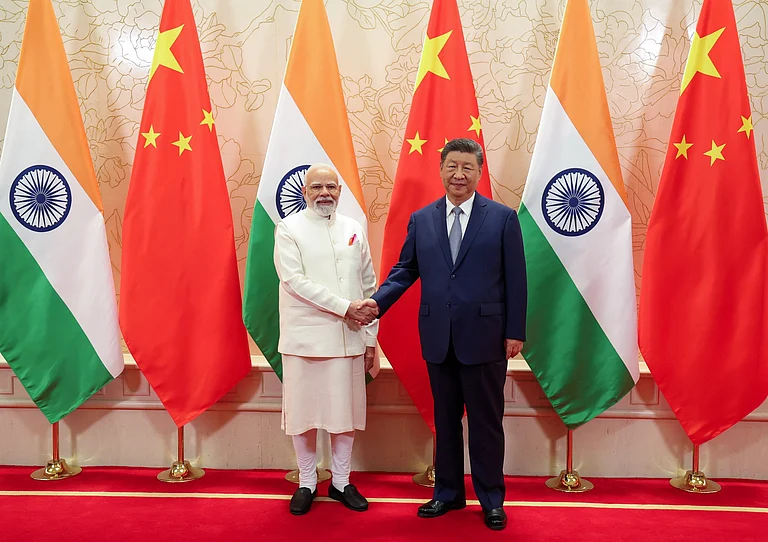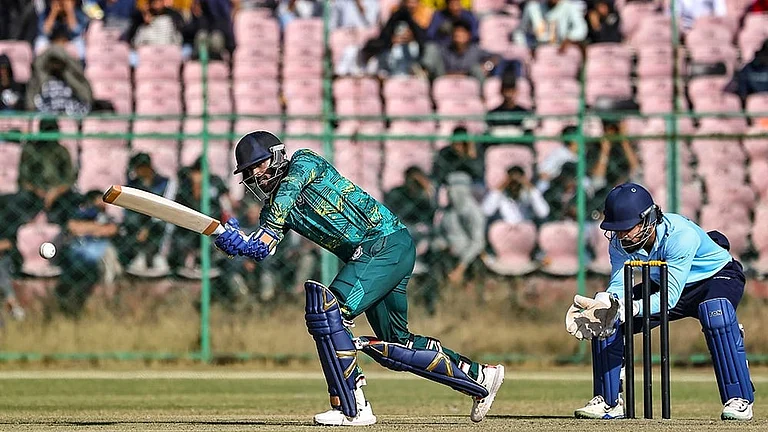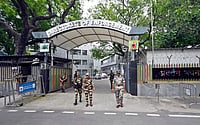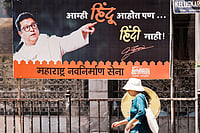In critical comments upon politics and political process in contemporary India, many have observed the total absence of ideology and differences in policy frameworks between the different parties and "party clusters" visible on the national arena." Nothing, however, could be further from the truth than comments which speak about the the death of ideology in Indian politics.
It's true that on economic issues there is a great deal of agreement between the two dominant "party- clusters": the BJP and its allies on the one hand; and the Congress plus non-Marxist secular groups on the other. But when we consider questions pertaining to the national identity of India, and the plural religious character of her social constituents, we can immediately discern sharp differences between the two major party groupings. The book edited by K. N. Panikkar deals explicitly with such differences in visions of national identity and religious fabric between different political groupings, as perceived by half-a-dozen leading members of the liberal/ radical intelligentsia in the country.
The opening essay, The Tyranny of Labels by Romila Thapar, a distinguished scholar, is a critical analysis of the doctrine of Hindutva as advocated by the BJP . Thapar argues that it's a travesty of truth to suggest that since time immemorial there existed two distinctly crystallised communities within Indian society— that of Hinduism and Islam— engaged in a deadly battle for dominance over each other, temporally and spiritually. Instead, there flourished a variety of identities, based upon religion, physical location, ethnicity and varna/ jati, which were engaged in jostling for control over the hearts and minds of the people. It's only in the colonial centuries, that the British, for insidious reasons, started speaking of the supposedly well- knit and cohesive communities of Hinduism and Islam. This colonial conceptualisation was later uncritically picked up by reflective scholars and political actors with disastrous results in the 20th century. "The tragedy is that actually the study of the (Indian) past sends us very different messages, but we choose not to read them", states Thapar. "Indian society's always been a multi- religious, multi- cultural society where identities have inevitably been multiple. Such a society's not in itself secular but is conducive to the evolution of a secular protecting the civil and human rightssociety, of all its citizens. Our history's been very different from that projected in the two- nation theory and Hindutva ideology."
It is difficult to do full justice to all the essays in this book in one short review. I'm, therefore, obliged to highlight those contributions which focus upon the core concept of Hindutva, highlight its frightful consequences, and spell out the national identity of our country as it is defined in our constitution and as it is existentially constructed by the great majority of our people.
In Hindutva and the Question of Conversions , Sumit Sarkar discusses, with commendable sensitivity, the manner in which a plural religious formation like Indian society came into existence; and implicitly posits, how such a plural society maintained peace between its diverse constituents for centuries. Here it may be mentioned, that in view its explosive character, very little rigorous research'sof been conducted upon the history movements of religious conversion and spiritualof transformation within South Asia. Focusing upon long duration trends, Sarkar out that any mechanical or simplistic viewholds of religious conversion in India would be wholly erroneous. Instead, we have to the slow of the religiousenvisage high cultures atpercolation the apex of society — namely, the moral visions of Hinduism, Islam, Christianity and Sikhism to the middling and lower social orders over long periods of time. Simultaneously, these high cultures interacted with each other to create new sectarian movements with remarkable capacities for tolerance and syncretic growth. The imposition of a monolithic, rigid worldview has social turbulence of an intensity so farcreated unknown in our country.
In striking essay that examines sectarian and religiousa conflict within India from the perspective of political economy, J. Ghosh has a novel argument that's been largely Indian literature on com-munalism.overlooked Thein author implicitly argues that the capitalist mode of production seeds of bitter conflict betw-eengenerates different social classes and religious communities within a plural society like India. This is so because the quickening of the market mechanism— involving as it does individuals and social groups in relations of production, exchange and antagonism with each other— is in itself generative of serious turbulence within a polity. The globalisation of the economy in the '90s has carried this turbulence to an even higher level, through a retrogressive distribution of wealth within the community. Because of these economic policies, India's set on a path which could possibly lead to a scenario of intense conflict between its different social and religious constituents. While this profound pessimism is largely con fined to radical groups within the country, Ghosh's essay is marked with considerable persuasive power and social sensitivity; and it needs to be taken seriously by all those who look upon the "market" and "globalisation" as guaranteed solutions to India's social ills.
The book has other reflective, stimulating essays. S. Varadarajan's powerful, liberal argument for the constitution of a truly responsible press; Tanika Sarkar's perceptive focus on The Gender Predicament of the Hindu Right ; to Rajiv Dhawan's critique of the unresolved tension within the Indian Constitution when it turns to questions of secularism and religious plurality.
I trust this valuable book will get the wide readership it so richly deserves. I also hope it's translated into Hindi. For it is in the great heartland of our Republic that these insights need the widest dissemination.


























